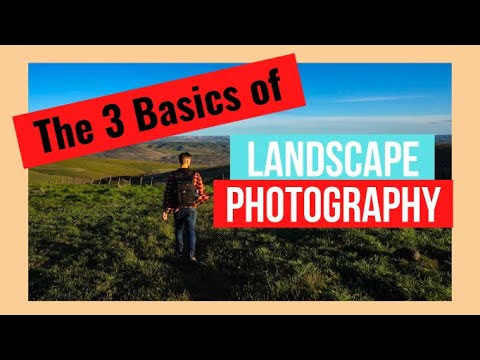You might have been wondering, what are the three basic elements of photography? These are Light, Composition, and Post-processing. Understanding all three will make your photos more compelling and memorable. But, before we begin, let’s first look at the concept of the histogram. The histogram is a graphic representation of exposure levels and is a great way to see if your image is under or over-exposed.
Light
Understanding the fundamental characteristics of light is critical to successful photography. Without understanding how light behaves, you cannot capture the kind of visual appeal you are looking for. By understanding the three basic principles of light, you will better use this natural phenomenon to your advantage.
Color plays a big role in your photographs. It helps set the mood, adds to the visual impact, and frames your subject. Use colors that contrast with each other to make your subjects pop. You can also use contrast to create a moodier or soothing image. Whether the scene is sunny or cloudy can greatly affect the visual appeal of a photograph.
Light is also an important factor in understanding the composition of your photo. The placement of your light source can create an impression of depth and contrast. If the light source is behind the subject, the image will be flat, while lighting it from the side will produce shadows and texture. In addition, moving the light source to one side will make your subject brighter and create a dramatic photo.
When taking photographs outdoors, natural light can be the best light source. It’s best to take advantage of it during sunset or sunrise when the sky is full of vibrant hues, and the atmosphere filters the light into a soft glow.
Composition
Composition is the process by which an image is composed to create a pleasing visual experience. You can create an effective photo by carefully choosing the right elements to include. For example, you can use leading lines to draw the viewer’s eye to the subject. Shadows, meanwhile, highlight the right points and create balance. Understanding the basic principles of photography will help you use these techniques to create the perfect picture.
The composition also refers to the way objects are arranged in a photograph. For instance, the placement of a tree, a rock, a flower, or a person in a landscape photograph will affect how viewers perceive the image. When using these elements, the photographer should consider the eye path of the viewer to help them make the right decisions.
Composition is an essential principle of photography. It allows a photographer to create an image that tells a story. It does this by juxtaposing different elements. The use of color and texture can add a narrative to an image. It can also add weight to a photograph.
Lines are another important element of the composition. A line connecting two points in a photo is a leading line. Whether the line is real or imaginary, it will guide the viewer’s eye. Lines, while arbitrary, are among the most important principles of composition in photography.
Post-processing
Using software to manipulate photos is a huge part of photography today. Whether you’re using Photoshop or Lightroom, you can use these tools to enhance and correct your photos. Learn the basics of post-processing to make your images look professional. Even if your camera doesn’t offer these features, it’s important to know how to use them.
Using post-processing techniques allows you to enhance your work and create a uniform look. Expert photographers often spend as much time on this part of the process as they did on the shooting phase. It’s important to remember that post-processing allows you to fix many problems with your photos, so take the time to fine-tune your metadata for each picture.
One common problem with a photograph is its dynamic range. Using post-processing to increase the dynamic range of an image will allow you to create an image that features more details and ranges of light. This is known as HDR. One of the easiest ways to do this is by taking several images at different exposures and merging them into a single image.
Before post-processing, you must organize your RAW files properly. The last thing you want to do is bury photos in folders and not be able to find them later. It’s best to use a photo management software like Adobe Bridge, which is free and helps you organize your images logically. This software also allows you to name images and add metadata.


